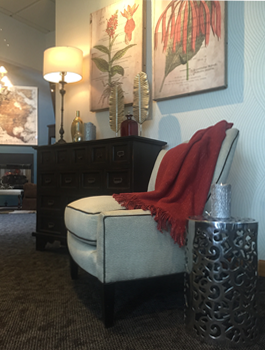When we absolutely hate the light in a room, what’s really the problem? One person wants a brightly lit room, and another wants it dim. I’m reminded of the family parties we used to have that were all lit by candles. Of course, we thought the candlelight was romantic. But we missed the fact that Grandpa was miserable. He couldn’t see to read his birthday cards. No wonder he fell asleep.
But we missed the fact that Grandpa was miserable. He couldn’t see to read his birthday cards. No wonder he fell asleep.
We react to the brightness of the light, but also to color temperature. Color temperature can lean toward the yellow hues or toward blue hues. Measured in Kelvin units (K), there are three types of color temperature for light bulbs used in a home. Bright white or cool white has a color temperature of 3500K – 4100K; Daylight is 5000K – 6500K. Soft White is 2700K – 3000K. When you purchase light bulbs, you’ll see the Kelvin units on the package. If you forget all the ranges, just remember that the higher the degrees Kelvin, the whiter the color temperature.
Most people hate what 3500 – 4100K does to color and mood. White glare may help you read and stay awake, but it’s not great for color rendition. Ever wonder how you got a black sock on with a navy blue? You may not be color blind – it could be the light fixtures. Some men who are color blind are not bothered by that glarey blue light. So, an argument can ensue about “that light bulb.”
Lighting is a matter of aesthetics, but there is also an adaptability factor to consider. As we age, we  need more light to see clearly. The cones in our eyes – the part of our eyes that receive the light we see – don’t respond as quickly as they do when we are young.
need more light to see clearly. The cones in our eyes – the part of our eyes that receive the light we see – don’t respond as quickly as they do when we are young.
Research also suggests that our desire for different types of light change throughout the day. In the morning, many people prefer a bright white light to wake up, and charge through their day. Bright light in the morning also helps our body’s sleep-wake cycle. Bright morning light tells our brains that this is morning, and sets the rhythm for the periods of time we are alert and are winding down.
As this cycle progresses throughout the day, the preference for type of light changes. Researchers say that we seem to 
As interior designers, we strive to keep these preferences in balance. Lamps or overhead lighting in a room can have a single color temperature, but we can also use light to define a space. Lighting the farthest corners expands a room. The opposite trick affects large rooms and shrinks a space. Decide who you are entertaining, and who lives with you, and the effect you are after. Oh, and the room’s charm won’t be ruined by a well-placed lamp to shed a little light on the subject.

